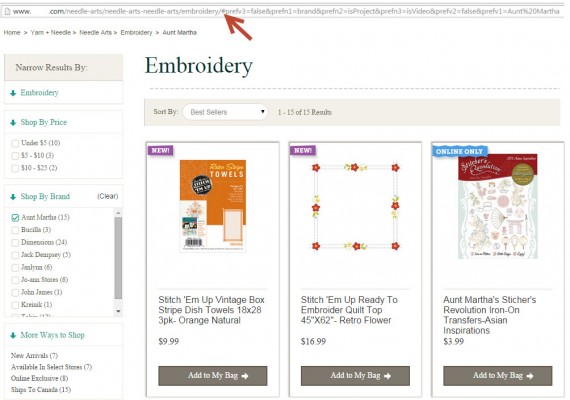This is the fifth installment of my “SEO 201″ series, following:
- “Part 1: Technical Rules”;
- “Part 2: Crawling and Indexing Barriers”;
- “Part 3: Enabling Search-engine Spiders”;
- “Part 4: Architecture Is Key.”
All ecommerce platforms claim to be search-engine friendly, to one extent or another. Despite their marketing claims, I’ve never worked with a platform I didn’t need to modify for SEO.
This article won’t tell you which ecommerce platform is the most SEO-friendly. They can all be SEO-friendly if you know what to look for and have a developer or integrator who’s willing to work with you from the start to bake those modifications into the build.
Because the platform is so central to SEO performance — touching on all of the technical rules I discussed in the last four “SEO 201” articles as well as content and authority optimization — the choice of which platform to choose and how to implement it can make or break SEO performance. Once those decisions are set, it’s expensive and difficult to fix platform-based SEO issues. And, at the risk of being repetitive, I’ve never worked with an ecommerce site that didn’t have at least one platform-based SEO issue to resolve.
If a feature is costing you money and you want search engines to drive users to that content, test it. Don’t stop with the core platform. Third-party add-ons like reviews and faceted search should also be investigated by these same criteria.
Make platform SEO criteria a part of your requirements for purchase. You may need to compromise on a few of the SEO criteria as you make your decision, but you’ll be making compromises on other business criteria as well. At least you’ll know what you’re compromising on and can plan to mitigate those issues during the design and development of the site.
To save time and money, take a look at the tips below for determining the SEO-friendliness of your platform candidates.
Evaluating Ecommerce Platform SEO Capabilities
As you’re making your platform decisions, before you begin any architecture or design work, scope out the candidate platforms with these SEO tips in mind. Ask your sales representative to give you a couple of examples of sites that use the platform’s SEO features.
URLs. There’s more to SEO-friendly URLs than the ability to form short, static URLs with keywords in them. The majority of platforms have friendly URLs covered at this point. The most important aspect is that a single URL exists in a crawlable state for every individual page. In “SEO 201, Part 3: Enabling Search-engine Crawlers” I discussed search engines’ difficulty with JavaScript, CSS, and cookies. The reliance on those technologies can stem from the platform itself, or individual site design and development choices.

Facets producing URLs that aren’t crawlable.
For example, a well-known fabric and craft store includes product brands in its faceted navigation, as shown above. Unfortunately, the platform doesn’t allow those facets to function as individual pages. Instead, the page refreshes to display the facets chosen without creating a separate page at a separate URL. Platforms do this to avoid making another call to the servers and database, speeding up load time. The telltale sign in this case is the hash mark included in the URL, indicated by the red arrow above. Search engines won’t index anything after a hash tag, so make sure that the platform has a way to give search engines access. Putting the URLs in an XML sitemap is not good enough.
The downside of this is that without a unique URL, there is no separate page to optimize or rank for that facet. If your facets will solely be elements that people tend not to search for, like price, availability and shipping time, then that’s probably fine. But this is a big limiter; think hard before choosing a platform that narrows your SEO options and can’t offer a solution to the issue.

JavaScript link instead of HTML.
Another indicator could be mousing over a facet and seeing a JavaScript line appear in the lower left hand corner of your browser — as shown above — instead of a separate URL. The easiest way to make sure that the links load separate pages and still contain content is to disable cookies, CSS, and JavaScript. To learn how, see “SEO: Try Surfing Like a Search Engine Spider,” a previous article. In this case, the JavaScript is keeping the search engines from indexing a short-term promotion, which is actually a good thing. But if you see the same behavior on links to content that you need to have crawled and indexed, then there’s a problem.
Lastly, of you mouse over a link and you see nothing change in the lower left of your screen, no HTML or JavaScript, then the search engines won’t be able to access the content through that link.
Duplicate content. Set a crawler to run on the sample sites that the sales representative gives you to determine how much duplicate content the platform generates. Some platforms use the canonical tag to control the SEO issues for the duplicates they generate, but some don’t. A crawler like Screaming Frog’s SEO Spider will report which URLs have canonical tags applied and which do not.
Load time. Site speed varies depending on other factors, but the platform is definitely a part of the equation. Search engines use site speed as one of their hundreds of algorithmic factors, rationalizing that searchers don’t want to land on a slow site when they’re looking for products to buy. Google’s “Make the Web Faster” site lists some helpful tools to evaluate sites. Use them on the sample sites, with the understanding that other factors could be in play besides the platform. If all of the sites run slow, there may be an issue.
Content optimization. Out of the box, platforms enable SEO elements like title tags and headings to be generated based on the names of the pages. These are usually suboptimal and in some cases will contain the name of the platform in addition to your page name. Look at the sample sites’ title tags, which are usually a good indicator. If the title tags are poor it’s probably a platform default at work.
Defaults are no problem as long as they’re easily changed. Make certain that the content management system allows manual optimization of the title tag, meta description, and H1 heading so that you can override the defaults with more SEO friendly text. You should be able to do it two different ways: by resetting the default patterns that generate the SEO data like title tags across the entire site or an entire category, as well as optimizing by hand on every individual page. Nearly all platforms enable this now. If the platform you’re considering doesn’t, beware; it’s likely there are other areas where they fall short as well.
If the platform uses your database entries to determines a page’s name, that name might be confusing in terms of customer readability and SEO. The content management system should also enable a display name field separate from the default page name. In addition, the formulas used to generate the default title gats and other SEO data should incorporate the display name instead of the default page name.
These are some of the biggest issues I’ve discovered working across various platforms and clients.
What platform-based pitfalls have you encountered?
For the next installment of our “SEO 201″ series, see “Part 6: Redesigns Impact Search Traffic.”




